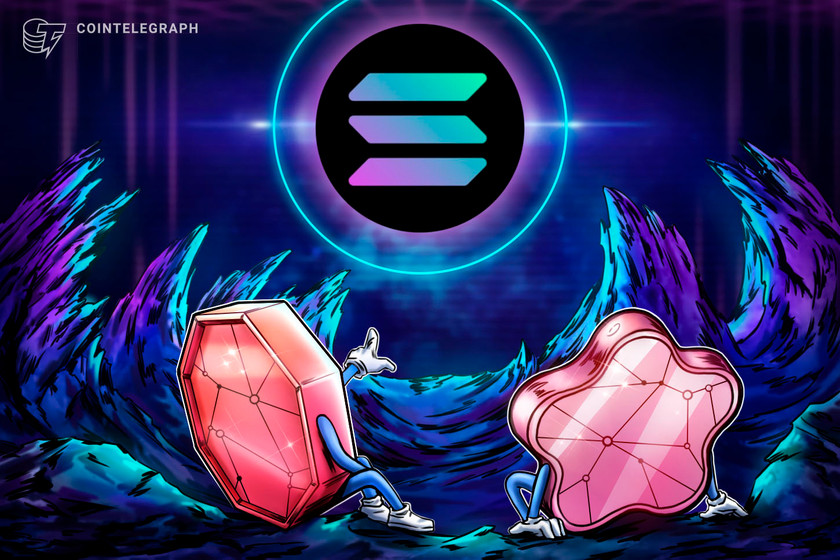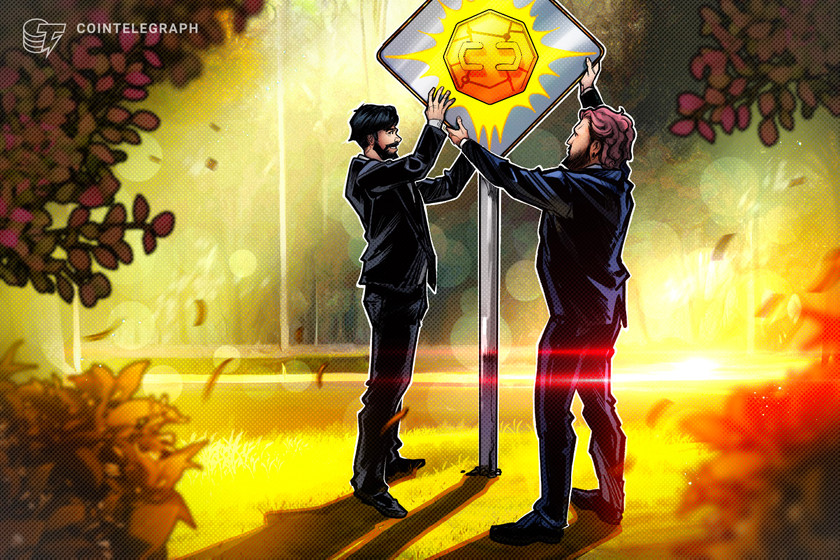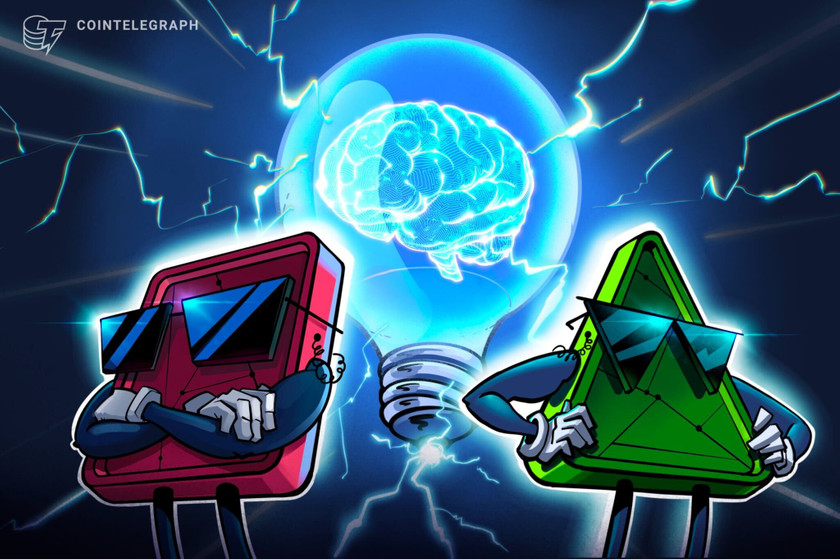Building communities and ensuring NFT success: Insights for artists


Building communities has become more crucial than ever in today’s rapidly changing art space, especially with the rise of NFTs.
The importance of building communities cannot be underestimated in the rapidly changing art world, driven by technology and the explosion of nonfungible tokens (NFTs) in the last two years. An audience is a social media following, but a community is a group of people working toward a common goal.
Art market economist and academic Magnus Resch has extensively researched the importance of communities and networks for artists.
Resch holds a Ph.D. in economics and has studied at the University of St. Gallen, the London School of Economics and Harvard. In addition to lecturing at Yale, he has produced several publications about the economics of the art world. He has appeared in academic journals and major publications like The Wall Street Journal, The New York Times and Vanity Fair.
Resch recently spoke to Cointelegraph about his latest book, How to Create and Sell NFTs — A Guide for All Artists, which explores the importance of building meaningful communities for artists, and how to create and sell NFTs compatible with their artwork.
Cointelegraph: Dr. Resch, how important is community building for artists in today’s rapidly changing art world?
Magnus Resch: Community in the art world matters for the success of any artist, but being in the right one is even more important. In one of my most recent studies, I looked at thousands of communities in the art world to evaluate their impact on the success of any artist. The results were surprising: 99.9% of artists’ communities don’t have any positive effect on the career of an artist.
These communities — I call them “island networks” — consist of museums, galleries, fellow artists of the same level and fans or supporters. These groups mean well but will never make a real impact at the higher end of the market. Instead, there is only one network that leads to success. For an artist who strives to be successful, the goal must be to become part of it. I call it the “holy land.”
CT: Can you share some key strategies for artists to successfully tap into this one community you call the “Holy Land?”
MR: My study shows the art world is a people business. Who you know matters more than what you make. In the absence of objective criteria that define what “good art” is, the network steps in to decide what good art is and what is not. That is why networking is so vital.
For artists, this means don’t spend all your time in the studio. Go out and meet the right people, at best, those that are part of the holy land. Or put bluntly, artists are on their own and need to accept that they are entrepreneurs running a business. Branding, marketing and self-promotion are essential to their success and are more important than their art. Artists who are waiting to be discovered will fail.
CT: What role do social media and digital platforms play in helping artists connect with their audience and foster a sense of community?
MR: Social media is the most relevant marketing tool for artists. They cannot rely on galleries to do the job, as most galleries are part of island networks and close down after a few years. In fact, one-third of all galleries never make any profit.
Getting into the holy land is hard, as only a few spots per year are available. That’s why building a brand is so important for artists. The easiest way to do this is via social media: 45% of art buyers regard social media as the most important channel to discover and find artists. Visits to offline galleries only follow in second place. I argue any artist serious about making it in the art world needs Instagram.
CT: Has this changed with the rise of NFTs?
MR: Not at all. NFT projects have allowed artists to learn what is required to make it without the gallery support. We have seen that the most important pillar in any NFT project is the community. Failed projects have misinterpreted the community as an “audience.”
An audience is the following on social media. A community is a close circle, a tight-knit and active group of people working toward the same goal. They can assemble on social media, but it goes beyond that. Building a community is about building loyal members who are supportive of an artist’s idea. I believe in the future where artists will give their community voting rights, allow them to participate in projects, and exchange ideas and assets. This is considerably different from today’s audience that just “likes” and follows but doesn’t participate.
CT: Can you share some successful examples of traditional art institutions and galleries that have embraced NFTs and the impact it has had on their businesses?
MR: The biggest winner of the NFT hype were digital artists such as Beeple, Justin Aversano, and Jen Stark. Digital art never played a major role in the art market, being the least popular medium after paintings, sculptures and photography. And then suddenly, some of these digital artists neglected by the market made significant money and sold for record prices. The real impact of NFTs, however, is yet to come. NFTs will be the underlying technology to authenticate every artwork — and not just digital art. This will change how art is traded fundamentally. Without an NFT to prove that the work is real, nobody will buy the painting.
CT: What are the main implications of NFTs on the art market?
MR: So far, there have been none. We are only at the beginning of what’s coming. I predict that NFTs will have a lasting impact, which is fourfold: Artists will exert more control over their work and earn royalties from resales; more collectors will populate the market as it has become more transparent; institutions will find it easier to engage their communities, and give them ownership through participation and involvement in governance. And finally, the art market will become more regulated for the better and thereby increase in value. Clearly, this won’t happen overnight, as changes in the art world take time. We are looking at 5–10 years’ until NFTs become the standard of how artworks are transacted and authenticated.
CT: Can you discuss any common mistakes artists should avoid when entering the NFT space and how they can set themselves up for long-term success?
MR: Most artists will never enter the NFT space as NFTs are not art. And those overpriced, celebrity-endorsed JPEGs that often are associated with NFTs will go away. I don’t even think we will talk about the term “NFTs” five years from now, similarly as we don’t talk about mp3 anymore.
NFTs are the underlying technology that will be used whenever artworks are transacted. In the future, it is not unlikely that the artist will register every painting that leaves a studio on the blockchain. So when it’s traded, the artist not only gets royalties but also knows who the new owner is. This allows them to work more independently and not rely on galleries entirely to promote or authenticate their works. As a consequence, artists will earn more on every piece they sell.
CT: How can collectors effectively determine the value of artwork in today’s dynamic market, particularly with the emergence of NFTs?
MR: Most art is not a good investment. Almost all artists are stuck in island networks and will not see an increase in value. For collectors who are purely interested in making money, they should focus exclusively on artists and galleries who form the population of the holy land. However, if they are interested in collecting art for any other motive (and consider it a cherry on top if the artist increases in value), the whole art market can be their hunting ground.
CT: Has the price transparency and liquidity that NFTs facilitated changed this?
MR: Many of those who bought NFTs as an investment were not able to make a profit with them. They have moved on to other investments. And as the hype faded, the true winners were those who bought works that they liked and wanted to live with. Another phenomenon is visible, too; we are currently seeing the merger of the traditional art market and a few digital artists who had success during the NFT hype. Beeple, Dmitri Cherniak, Tyler Hobbs, Casey Reas, and Artblocks, who exclusively sold on digital platforms like OpenSea and catered to a crypto-native audience, have now started showing their works with established traditional players in the art market, such as Pace Gallery. A representation by Pace Gallery, which is part of the holy land, will help them to manifest their value, even after the hype and their crypto buyers are gone.
CT: If art is not a good investment, why should we buy it?
MR: After having done much data analysis on the art market, one strategy for collecting proven to be the most effective is to buy what you like, as most likely, you will never make any money with the art you buy. I call it “responsible buying” — the notion that buying art is not just an exchange of monetary value but also a philanthropic act. Rather than putting money into an asset, I donate it, knowing that, in all likelihood, I won’t be able to resell the piece. But, by buying it, I am supporting the artist so that she can continue creating art, which inspires her community to continue with this essential form of human creativity. To me, it is a way of doing good, and it comes with an object that I love and a story to tell.



















